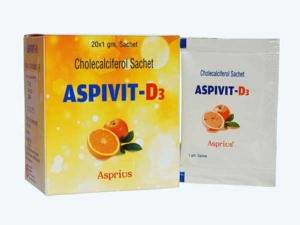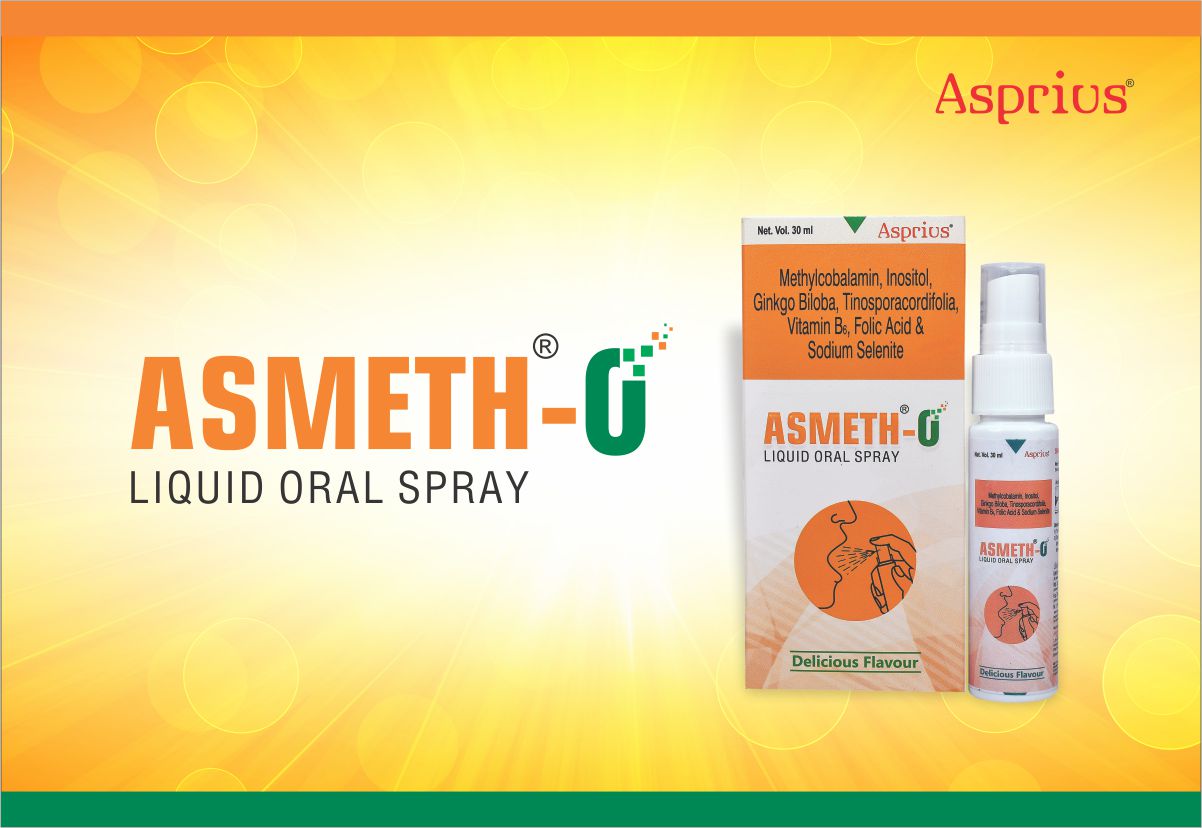
Dr. Sanjay Agrawal
Leading Pharmaceutical consultant and editor-in chief of IJMToday




What causes a vitamin D deficiency?
A deficiency in vitamin D can result from inadequate exposure to sunlight, inefficient production in the skin, not enough vitamin D in your diet, and health conditions that can affect it including, gastrointestinal disorders, renal diseases, and liver diseases.
Darker skin
Melanin is what gives skin its color. Light-skinned people have less melanin than those with darker skin. Melanin is able to absorb UV-B radiation from the sun and reduce the skin’s capacity to produce vitamin D3 by 95%-99%. Dark-skinned individuals have natural sun protection and require at least three to five times longer exposures to make the same amount of vitamin D as a person with a white skin tone. African-Americans have a population mean serum 25(OH)D level of 16 ng/mL, whereas white Americans have a level of 26 ng/mL.
Weight
Being overweight or obese may put you at risk for a vitamin D deficiency. A recent review of 23 studies showed that obese subjects had 35% higher rates of vitamin D deficiency compared with normal weight subjects and 24% higher rates compared with overweight subjects. While diet and decreased sun exposure may have some impact on this, there appears to be an increased need that cannot be met without a supplement. One study tested the blood levels of vitamin D after sun exposure in both obese and non-obese subjects. Both saw an initial rise in vitamin D levels after similar exposures, but 24 hours later, there was 57% less vitamin D in the blood of the obese subjects. Both groups had a similar capacity of the skin to produce the vitamin. The difference was seen in the release of vitamin D from the skin into the circulation.
Limited exposure to the sun
You may look out your window and see the sun shining and think that you are safe from this deficiency, but that is not always the case. Even in sunny climates there is an increased prevalence of vitamin D deficiency. We have all heard about the dangers of skin cancer and the need for sunscreen to protect us from this disease. This knowledge and the preventive actions we take have significantly decreased our vitamin D levels. Sunscreen protects so well against UV-B rays that an SPF of 30 decreases vitamin D synthesis in the skin by more than 95%. On top of this, we tend to spend more time indoors. One study found that it took Caucasians exposure of more than 30% of their body every day in the summer to make the optimal amounts of vitamin D. Most adults work indoors and wear more clothing during the work week, which leaves only about 10%-15% of their body exposed to UV for short periods, so they cannot meet their vitamin D needs through the sun alone. Even if you do have some exposure to the sun, the total amount of vitamin D you can produce is affected by the season, time of day, ozone amount, latitude, and number of clouds in the sky.
The important thing about using the sun for vitamin D production is to know that less is more. You are better off with short regular exposures to the sun rather than prolonged exposure for many reasons. The process is not as simple as the sun hitting your skin and vitamin D appearing in your blood. What actually happens is that vitamin D3 is first transformed by a process known as hydroxylation in the liver to 25-hydroxyvitamin D3, often written as (25(OH)D3), and then again in the kidney to its active form, 1,25-dihydroxyvitamin D3, written as (1,25(OH)2D3). The level that is checked in your blood is 25-hydroxyvitamin D, often written as 25(OH)D, which includes vitamin D2 and D3. By staying in the sun, you limit this process and can actually get less vitamin D. You also have a lower risk of burning and damaging your skin with short exposures.
The National Cancer Council in Australia recently published a position paper on ways to minimize the risk of skin cancer while maintaining adequate vitamin D levels via exposure from the sun. Currently, one-third of the population there is deficient. Extended and deliberate sun exposure without any form of protection when the UV index is 3 or above is not recommended for anyone. When the UV index is below 3, sun protection is not recommended, and it is recommended that people be outdoors in the middle of the day with some skin uncovered on most days of the week.
Who is at risk for vitamin D deficiency?
Being that the sun is the primary source of vitamin D, your exposure, or lack of it, will impact your risk for a deficiency.
The Endocrine Society recommends screening and treatment for individuals at risk, including older adults with a history of falls or non traumatic fractures; obese children and adults (BMI > 30 kg/m2); African-American and Hispanic children and adults; pregnant and lactating women; and people with musculoskeletal diseases, chronic kidney disease, hepatic failure, malabsorption syndromes, and some lymphomas. Ongoing monitoring is recommended for the elderly, people with disabilities, and hospitalized people as they have been shown to have a significantly higher risk.
Research has begun to focus on who is deficient or insufficient in their vitamin D levels. Finding a deficiency does not mean that vitamin D is the cause of any ongoing symptoms. It simply means that there is a possible relationship, and more studies need to be done to clarify the relationship between vitamin D insufficiency or deficiency and disease processes.
Malabsorption
People with one of the fat malabsorption syndromes (for example, Crohn’s disease or celiac disease) and people who have had bariatric surgery are often unable to absorb enough of the fat-soluble vitamin D.
Age
Elderly: It has been shown that as we age our body has a decreased ability to synthesize vitamin D from exposure to the sun. There can be as much as 25% reduced production over the age of 70. While this can have an impact, it doesn’t cause as much of a deficiency as the other risk factors.
Children: A study done in Ethiopia found that school children between the ages of 11-18 years were more likely to be overweight or obese when they were deficient in vitamin D. Another study of 301 students aged 11-19 years found that 12% of the students were deficient, and 53% had insufficiency. It also found that as body weight increased (measured by BMI) the level of vitamin D decreased.
Medications and medical conditions
A wide variety of medications, including antifungal medications, anticonvulsants, glucocorticoids, and medications to treat AIDS/HIV, can enhance the breakdown of vitamin D and lead to low levels.
How do health care professionals diagnose a vitamin D deficiency?
All it takes is a simple blood test to find out if you are deficient in vitamin D, but you need to have the correct test done and at the correct time of year. There are two blood tests for vitamin D. One is for a compound called 1,25(OH)2D. This is one is not a good measure for your current vitamin D level. It has a short half-life and can be impacted by your parathyroid hormone (PTH), calcium, and phosphorus levels, so it’s not a true measure of your vitamin D status. The preferred test is the 25-hydroxyvitamin D, written as 25(OH)D. This is the most accurate measure of your current vitamin D status as it reflects what you get from your diet, supplements, and the sun. It is also the one that the majority of the research studies measure. As with the guidelines for how much to consume, there are also two sets of guidelines for what your blood level should be. One is written by the Institute of Medicine (IOM) and the other by the task force for the Endocrine Society. These levels are for serum (blood) 25(OH)D:
IOM Guidelines | Endocrine Society Guidelines | |
Deficient | Below 12 ng/mL | Below 20 ng/mL |
Insufficient | 12 to 20 ng/mL | 21-29 ng/mL |
Sufficient | Over 20 ng/mL | 30-60 ng/mL |
Ideal | 40-60 ng/mL | |
Considered safe | <100 ng/mL |
The largest meta-analysis ever conducted on all of the published studies between 1966 and 2013 regarding 25(OH)D levels and all-cause mortality found that the lowest mortality (death) risk is seen when the levels are >40 ng/mL. According to this, the IOM guidelines are too low and there is a plea calling on the public health authorities to change the recommendations for both the ideal blood level and the requirements needed to achieve this level.
Your 25(OH)D level will change by seasons if you vary how much time you spend in the sun each season. Keep this in mind when scheduling your test.
What is the treatment for a vitamin D deficiency?
The amount of vitamin D that is needed to correct a deficiency will depend on the severity of the deficiency and your individual medical conditions. The time of year will also impact your needs. For example, if you are on the low end of adequate blood levels and heading in to the winter months you would need a bit more than if you were heading in to the summer months if you spend time out in the sun. The goal for everyone is to get your stores to a safe level and prevent them from dropping with a maintenance plan.
Vitamin D3 has been shown to be the best choice for supplements. Vitamin D2 supplements do not raise your levels the same amount as D3 and, in some cases, they have been shown to decrease levels over long-term use. Natural sources of vitamin D2 are scarce, and the majority of research has been done using D3 supplements.
What you take is as important as how you take it. Vitamin D supplements should be taken with a meal that contains fat. Studies have shown that when taken on an empty stomach versus with a meal containing fat, there was an average of 32% more vitamin D absorption in the fat-containing meal. This ranged from 11%-52%. Even an 11% reduction is significant and can impact your vitamin level. A recent study instructed people to take their supplement with their largest meal (typically the one with the most fat), and in three months, their blood levels went up an average of 56.7%.
There are supplements that can be taken on a daily, weekly, or monthly basis. It’s a matter of preference and, most importantly, which one you will be more likely to take. When you are deficient, it is recommended to have your blood tested after two to three months of taking the supplement to be sure that your levels are going up. Work with your doctors to find the optimal plan for you.
The task force for the Endocrine Society makes the following recommendations:
- For children 1-18 years of age who are vitamin D deficient, we suggest treatment with 2,000 IU/d of vitamin D3 for at least six weeks or with 50,000 IU once a week for at least six weeks to achieve a blood level of 25(OH)D above 30 ng/mL, followed by maintenance therapy of 600-1,000 IU/day.
- We suggest that all adults who are vitamin D deficient be treated with 50,000 IU of vitamin D3 once a week for eight weeks or its equivalent of 6,000 IU of vitamin D3 daily to achieve a blood level of 25(OH)D above 30 ng/mL, followed by maintenance therapy of 1,500-2,000 IU/day.
- In obese patients, patients with malabsorption syndromes, and patients on medications affecting vitamin D metabolism, we suggest a higher dose (two to three times higher; at least 6,000-10,000 IU/day) of vitamin D to treat vitamin D deficiency to maintain a 25(OH)D level above 30 ng/mL, followed by maintenance therapy of 3,000-6,000IU/day. One study found that for every 33 lbs. of body weight the serum 25(OH)D level was 4 ng/mL lower at the end of one year of monitoring. This could lead to a significant change in the amount required to supplement based on your body weight and starting serum level.
- African-Americans: The population mean serum 25(OH)D level has been shown to be lower in African-Americans than whites, but supplementation has been shown to be as effective in this population.
Is it possible to prevent vitamin D deficiency?
A few foods naturally contain vitamin D, and other foods are fortified with it. With only 20% of our vitamin D intake expected from food, exposure to the sun and taking supplements remain the primary sources. Follow your health care provider’s recommendations for supplementing on a regular basis, get some sun exposure, consume foods that contain vitamin D, have regular blood work to monitor your level, and make adjustments to your intake based on your medical needs and seasonal changes.
- 1 tsp cod liver oil has 400 to 1,000 IU/vitamin D
- 3.5 oz salmon, fresh (wild) has 600 to 1,000 IU/vitamin D
- 3.5 oz salmon, fresh (farmed) has 100 to 250 IU/vitamin D
- 3.5 oz salmon, canned has 300 to 600 IU/vitamin D
- 3.5 oz sardines, canned has about 300 IU/vitamin D
- 3.5 oz mackerel, canned has about 250 IU/vitamin D
- 3.5 oz tuna, canned has 236 IU/vitamin D
- 3.5 oz shiitake mushrooms (fresh) has about 100 IU/vitamin D
- 3.5 oz shiitake mushrooms (sun-dried) has about 1,600 IU/vitamin D
- 1 egg yolk has about 20 IU/vitamin D
- 8 oz fortified milk or yogurt has 100 IU/vitamin D
- 8 oz fortified orange juice has about 100 IU/vitamin D
- 3 oz fortified cheese has about 100 IU/vitamin D
Continues…




